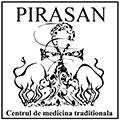From all major types of cancer lung cancer is the most frequent one and it has the biggest mortality rate, mostly because is very aggressive and invasive. In men lung cancer is the first cause of death and in women the second one, after breast cancer. In some countries, lung cancer has become the first factor of mortality for women too.
Lung cancer cells spread very easily in other parts of the body, a process called metastasis. Mainly because the lungs are heavily vascularized by lymphatic and blood vessels. By these vessels cancer cells travel in near-by organs even in early stages. Although it can disseminate in any parts of the human body, lung cancer metastasis are usually located in neighboring lymphatic nodes, adrenal glands (suprarenal glands), liver, brain and bones.
There are two main forms of lung cancer:
- Lung cancer with small cells: the most aggressive form of lung cancer; it spreads to the neighboring organs very fast.
- Lung cancer with non-small cells: the most frequent form of lung cancer. It comprises three subcategories: adenocarcinomas, squamous cell carcinomas (or epidermoid carcinomas) and large cell carcinomas (or undifferentiated carcinomas).
Symptoms
Pulmonary cancer symptoms may be mistaken for those of a less severe pulmonary disease. In general symptoms that suggest the presence of a tumor in the lungs assert in advanced stages, when the risk of metastasis is very high also. The symptoms include:
- heavily coughing with blood-colored phlegm
- shortness of breath
- in more severe stages hemoptysis (coughing up blood)
- thoracic discomfort and sudden stabs in the pulmonary area
- hoarseness
- dyspnea
- hissing breath (caused by the contraction of the upper airways)
- frequent infections, caused by a decreased pulmonary immunity
- alterations in the color of the skin
- loss of weight
- fatigability
Causes
Malignant tumors occur when there is a disorder in the cell’s reproduction process, disorder caused by an alteration of the cellular DNA. Hence it follows a division and a chaotic proliferation of cells from the affected tissue and the tumor formation in the respective tissue.
Alterations of the cellular DNA in lungs may be caused by a number of factors, such as:
- Thyroid disorders associated with pulmonary diseases (the thyroid controls the upper furnace, respectively the activity of the heart, of the lungs and of the thymus).
- A very toxic work environment or prolonged exposure to toxic substances, chemical volatile substances or particles of dust, coal or asbestos etc.
- Frequent Lung Diseases Inappropriately Treated
- A continuous state of sadness and discontent (it inhibits the pulmonary function, causing a poor oxygenation of certain areas of the lungs: the dead cells will no longer be eliminated because of the obstruction of the elimination ways; their accumulation leads to the DNA alteration in time)
- Smoking
Treatment
The treatment of lung cancer aims at arresting the proliferation of the malignant cells in the first place. By stimulating the functions of the thyroid and of the thymus, the immune activity will be improved and the number of antibodies released into the body will be increased. These antibodies will remove both the malignant cells located at the point of origin of the disease and the metastases in the body.
By using special acupuncture techniques, the affected lung area is deeply oxygenated and the local metabolism is stimulated. These procedures are necessary for the elimination of the toxins and of the dead cells in the lung area affected by cancer. The resorbtion of the cancer area is accompanied by the regeneration of the tissue by production of healthy cells. If the tumor is very aggressive and it does not allow a complete resorbtion, it will be isolated and calcified. In this case the patient should undergo a support treatment after the end of the treatment. Its duration varies according to the patient’s body.
The results of the treatment depend on the stage of the disease at the moment of the treatment start, on the general condition of the body and on the condition of each organ in particular.

